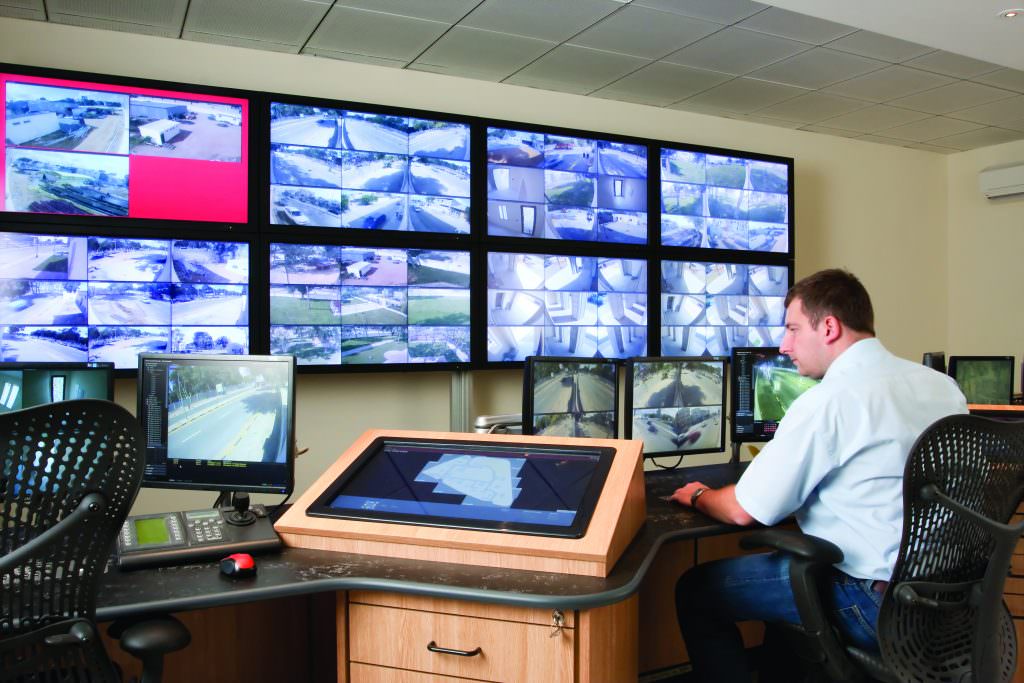VMS: The Next Generation

Facilities can now extend video management systems to provide a more complete security solution

Shawn Mather, Qognify
Since video surveillance was first used as a security tool, the control room and security operations have undergone a transformation, several times over. Video and video management systems (VMS) have evolved. Whereas once the view from video footage was fixed, low-quality and unreliable, control rooms now have reliable, analytics-powered, high-definition, the pan-tilt-zoom-enabled video that is able to deliver much more information and insight.
And, as we know, a video is not the only thing that has taken leaps forward. Today, organizations have access to advanced systems that increase situational awareness and ensure effective and compliant incident management. This technology is commonly referred to as physical security information management solutions or PSIM. In the same way that the brain and nervous system monitor, manage and control the body’s functioning, a PSIM solution unifies and manages all security and safety-related systems to provide an integrated and complete picture of an organization’s current state. Advanced PSIM and situation management solutions go even further and provide incident management capabilities. But these technologies do not function in a vacuum, they continue to rely on video as one of the key components of the system.
While a PSIM system is ideal for large and complex environments, not every organization, no matter how security conscious, requires a solution as specific and complex as a PSIM or situation management platform.
Next-generation VMS is actually closer to a PSIM solution in terms of capabilities than it is to a traditional VMS.
The gap that exists between traditional VMS and PSIM solutions is one where many organizations’ needs fall.
Those organizations would benefit from the enhanced security that greater situational awareness and incident management capabilities bring. It is this need that the next generation of VMS was born.

Next-Generation VMS
As mentioned above, a PSIM solution integrates various sensors and systems within the control room, then correlates, analyzes and visualizes the information to present a complete picture to security operators. The video is critical to this. With this in mind, next-generation VMS goes beyond video management by integrating additional layers of information from a range of sources.
Here is how next-generation VMS works, along with the benefits it provides. Video remains the main sensor, but, in addition:
- Data from other security systems, such as access control, fire detection, intrusion detection and alarm panels, are integrated with the VMS.
n The VMS is augmented with management capabilities over these same systems. Integrating the data from these core systems gives control room operators greater situational awareness, which can be further increased through geographic information system (GIS)-enabled visualization. Operators manage all of these integrated systems from the same interface (VMS), meaning no more switching between systems and applications. - So what does this mean in real terms? Without the integration of these systems, a typical fire alarm scenario might go something like what is depicted in Figure 1. At a minimum, all of these steps would need to be taken. Ideally, they would happen in conjunction, rather than sequentially.
With next-generation VMS, however, many of these steps would be either eliminated or automated, and pre-defined workflows would ensure that everything gets done as it should. The scenario would be very different and might go something like what is seen in Figure 2.
Along with the increased situational awareness, next-generation VMS also comes with:
- Procedure enforcement tools
- Automation of tasks
- Customizable user interface
- Dynamic workflows that guide operators to a consistent, effective response
Adding More Data Layers
By integrating core security and safety systems – video, access control, intrusion, fire detection, etc. – layers of information can work together. And the more layers that are added, the smarter the system becomes.
As already mentioned, control room technology has gone through a tremendous transformation during the last decade, and that includes the use of video analytics. One of the more exciting and important developments in video analytics has been in the field of advanced search. Put simply, advanced search performs rapid forensic searches across extremely large volumes of recorded and live surveillance video, in order to track, locate and pinpoint missing people and suspicious persons and objects during time-critical situations. It can rapidly process data from thousands of camera feeds in a matter of minutes, even seconds. What used to take law enforcement or security personnel hours, days or even weeks – manually reviewing video – can now be done in minutes or seconds.

Advanced search works by continuously indexing every person that passes by every camera on the network in the facility. Because of this, it is always ready to conduct a search either in real time or after an incident. Operators just need to either upload a photo, use an existing image from a camera, or create an “avatar” based upon a description of the person who needs to be located. This image or avatar is used to filter out 95 percent of the images and present the operator with the most likely matches. And because advanced search also provides geospatial awareness, it is able to retrace the person’s movements across cameras, identifying his or her current or last known location.
What used to take law enforcement or security personnel hours, days or even weeks – manually reviewing video – can now be done in minutes or seconds.
Now think about adding that layer of data to the integrated, next-generation VMS described above. One of the largest Level I trauma and burn research centers in the United States has done just that. Covering about 2.1 million square feet, the expansive medical center wanted to be able to more effectively track and locate missing, vulnerable patients and suspicious persons and to prevent infant abductions. They did this by combining wireless radio frequency technology, RFID bracelets and video surveillance with advanced search video analytics. If an infant is removed from a designated area, an alarm automatically triggers streaming video and advanced search.
VMS, Next-Generation VMS, PSIM or Situation Management?
So, on the spectrum of available security solutions, where does next-generation VMS fit in? It is actually closer to a PSIM solution in terms of capabilities than it is to a traditional VMS. This is because a traditional VMS is focused on managing and extracting value from video, while next-generation VMS is a security management solution, similar to a PSIM, just not as extensive. And a situation management solution goes even further than a PSIM system, with organization-wide operational impact.
In the past, the decision to implement either a PSIM, situation management or VMS-only solution was fairly clear-cut because the gap between traditional VMS and the other approaches was big enough that organizations were forced into one category or another. Next-generation VMS closes that gap, making the choice easier for some, but potentially more difficult for others.
What a next-generation VMS definitely does is address an unmet need in the market from security conscious organizations – hospitals, campuses, resorts, critical infrastructure facilities and others – that do not need a PSIM/situation management platform, but would benefit from some of the capabilities those solutions offer.

For example, unifying systems into a single interface makes management of them much easier and less time-consuming. In some cases, the various systems become more effective as the merging of information enhances their performance.
System performance is not the only thing that can increase by introducing advanced management capabilities to the control room. The enforcement of procedures via prompting, notification and escalation helps ensure that operators are responding according to organizational standard operating procedures. This helps reduce the potential risk from operator error.
Next-generation VMS is actually closer to a PSIM solution in terms of capabilities than it is to a traditional VMS.
Standardization in the Control Room
In much the same way that most of the world works with a unified and integrated set of office computer tools, aptly named Office, mission-critical control rooms will increasingly move closer to a similar model. Control room technology will be managed by software that brings everything that is needed together. Next-generation VMS moves one step closer to that inevitable development.
Deciding Between Next-Generation VMS and PSIM
When is video management-only enough for an organization? And when does it need a wider-ranging, next-generation VMS, or an even more comprehensive solution? Answering these questions depends on an organization’s challenges, needs, resources and budget.
Understanding the functionalities and benefits of the available options is a first step, but sometimes the distinction between the solutions is not clear, and it can be hard to tell what each provides. The information in Figure 3 can be used to help organizations match their needs with today’s technologies and solutions.
When a traditional VMS cannot adequately address the needs of an organization, yet the scope and scale of challenges, or the available resources, do not support the implementation of a PSIM or situation management solution, then next-generation VMS may be just the right fit.
Shawn Mather (smather@qognify.com) is director of global video and channel strategy for Qognify (www.qognify.com).
